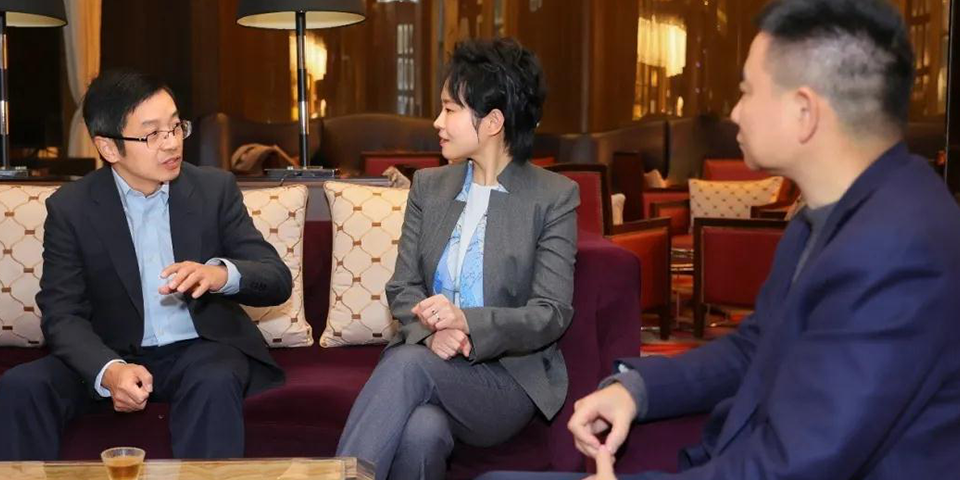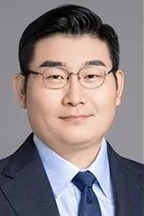Introduction
In 2020, the Royal Swedish Academy of Sciences awarded the Nobel Prize in Chemistry to Dr. Emmanuelle Charpentier, Professor Jennifer Doudna, for their contributions to the CRISPR/Cas9 gene editing method. Benefiting from this, gene therapy has flourished, and has completed the rapid development from basic theory to preliminary scientific verification, and then to practical application in a very short period of time. However, this science and technology has always been accompanied by the voice of controversy, which not only gives people infinite reverie, but also brings some hidden worries. Despite the flaws, these temporary disputes cannot stop human beings from trying to expand the application of this promising new technology. In recent years, the biotechnology best known for gene editing is being used to develop portable, home-based molecular diagnostics such as tests for infectious diseases and cancer. The mystery of CRISPR/Cas is slowly being lifted.
Ernst & Young's life sciences and healthcare industry research group talks to experts and brings you closer: CRISPR/Cas gene editing meets molecular diagnosis.
Expert introduction

Dr. Mingdong Zhang
Currently Chief Medical Officer and Vice President of Medical Affairs and Health Economics for Boston Scientific Asia Pacific
Former FDA Medical Officer and Epidemiologist
Former professor at the Faculty of Medicine, The Chinese University of Hong Kong
Postdoctoral fellow at the National Cancer Institute, National Institutes of Health
Ph.D., Molecular Virology, Baylor College of Medicine
"CRISPR/Cas technology is a means of changing life against the sky, and people have a lot of magnificent and beautiful reverie."

Dr. Tao Wang
Deputy head of the ctDNA Technical Expert Committee of the Chinese Anti-Cancer Association Tumor Marker Professional Committee
Director of Jiangsu Cancer Molecular Diagnostic Engineering Technology Research Center
Professor of Soochow University (Distinguished-Industry)
Doctor of Medicine, Fudan University
"The application of CRISPR, which started in medicine, will eventually go beyond medicine."
Dialogue Expert
Q1
CRISPR/Cas has always been controversial. How do you advise readers of Ernst & Young’s official account to properly understand this technology?
Zhang Mingdong:
CRISPR is a repetitive sequence within the genome of prokaryotes. The Cas gene is located near the CRISPR gene, or scattered elsewhere in the genome, and the protein encoded by the gene can interact with the CRISPR sequence region. Therefore, the gene is called a CRISPR-associated gene, or Cas.
In the history of life evolution, some bacteria have evolved a CRISPR/Cas gene cutting defense system in order to remove the invading virus genes, which can store a small segment of the virus gene in its own DNA after being invaded by a virus. in space. In this way, when the virus invades again, the bacteria can recognize the virus according to the stored fragments, and cut off the DNA of the virus to achieve inhibition. This mechanism truly embodies the delicate balance between life, mutual growth and mutual restraint and continuous evolution.
The invention of CRISPR/Cas technology has provided unprecedented tools for clinical medicine. Originally incurable diseases have the potential to be cured, such as various types of genetic diseases caused by gene mutation, HIV and other incurable viral infections, genetic modification of people susceptible to diabetes, etc., and may even become more effective cancer treatments. It is no exaggeration to say that CRISPR/Cas technology can be called a means of changing life against the sky, which makes people have a lot of magnificent and beautiful reverie.
However, major technological discoveries are often accompanied by two sides that cannot be ignored. The invention of gunpowder not only brought about the improvement of productivity such as mineral development and road construction, but also caused huge casualties caused by firearms; the greatest discovery of the 20th century, "The Theory of Relativity", opened up efficient and clean nuclear energy applications, but also made people shrouded in the haze of the atomic bomb. For CRISPR gene editing technology, it gives scientists the ability to modify human disease genes or eliminate organisms, and it also brings the possibility of the proliferation of biological weapons and even deformed biological mutation without ethical control. This technological invention is undoubtedly the most serious challenge that mankind has faced since the age of firearms to the age of nuclear energy.
Wang Tao:
CRISPR technology opens the curtain of gene editing! This is a revolutionary technology that understands the essence of life, saves life and even creates life. It is expected that with the unremitting efforts of scientific and technical personnel around the world, it will give full play to its greatest value, and gradually realize that human beings will be kept away from many diseases and achieve healthier and longer life. More applications for life. The sudden outbreak of the new crown epidemic in 2020 coincided with the great success of mRNA vaccines and the rapid development of mRNA therapeutic drugs. Breakthrough biotechnologies continue to emerge, and the prophecy of "the 21st century is the age of biotech" is becoming a reality. "
As Dr. Mingdong said, CRISPR, the dazzling pearl of this era, has two sides. How to prevent this magical tool from being abused by malicious groups is a common issue that the human family must face. I always believe that the baptism of every technological breakthrough brings not only a huge increase in productivity, but also a process of human beings constantly recognizing nature and themselves. I believe that with the blessing of biotechnology such as CRIPSR, human beings will have a better future. home.
Q2
What do you think will be the industry impact of the CRISPR/Cas9 gene editing published in Nature Communication on November 12 that may allow cells to develop cancer-related forms of genetic mutations?
Zhang Mingdong:
Since its inception, CRISPR technology has won the title of "gene magic scissors". It can be said that a hundred flowers are blooming and fruitful in the field of medical research. At the same time, it has also shown bright prospects in the fields of agriculture and the environment. Professor Jennifer Doudna and Dr. Emmanuelle Charpentier, the scientists who discovered CRISPR/Cas technology in 2020, won the Nobel Prize in Chemistry. This is a rare phenomenon in the history of the Nobel Prize that only took a few years from the discovery to the award, and it also shows how important this is. Find.
Recently, several Nature sub-journal articles suggested that CRISPR can cause unpredictable off-target effects and even cancer-related mutations in vivo. Therefore, whether CRISPR technology is "magic scissors" or "random scissors", there are different opinions. From the perspective of abnormal mutations caused by the off-target of CRIPSR technology, this is just an episode in the application of this revolutionary technology, indicating that the current CRISPR editing technology is not accurate enough and needs more optimization. It is necessary to further optimize to single-base editing, optimize single-base editing to specific parts, and achieve more precise and precise gene editing operations. So I think people should not draw conclusions about how unbearable or how dangerous the CRISPR technology is because there are some flaws in it. These flaws are completely surmountable, it's just a matter of time.
Wang Tao:
After the emergence of CRISPR technology, as a general technology, there must be some flaws in the field or direction of practical application. This is very normal. What needs to be done is that researchers keep trying and improving, and gradually realize industrial application. If it's all going well, I think that's what everyone needs to worry about. The development of the key details of CRISPR technology for each subdivision direction or specific disease application will take a little more time, we will see more practical results, maybe many incurable diseases will become curable diseases, this day Not far. In general, the application of CRISPR, which started in medicine, will eventually go beyond medicine.

Q3
Can you talk about the relatively mature medical application fields of CRISPR technology, in which aspects it brings good news to mankind?
Zhang Mingdong:
At present, the therapeutic areas with obvious progress mainly include:
① Cancer treatment, mainly for immune cell modification, gene repair or excision of mutant cells, etc., there are many clinical studies, some of which have obtained positive results.
② Genetic diseases, such as Huntington's disease (Huntington's disease), Duchenne muscular dystrophy (DMD gene), etc., have been reported in research, and progress to clinical stage II and later has also been reported, but relevant clinical data need to be published.
③3 The application of HIV and other viruses in vivo integrated infection, I think this is an area where researchers are relatively sure that there will be important progress in the near future, and it deserves everyone's attention.
Wang Tao:
In the field of medical diagnosis, CRISPR-based nucleic acid detection technology is most likely to become a new generation of molecular diagnosis platform, especially in applications away from PCR laboratories.
Medical diagnosis is the entrance of modern medicine to discover diseases. It provides rapid early warning and accurate diagnosis of diseases, so that treatment can be targeted and clear. For decades, in the field of nucleic acid testing, the only technologies that have been widely used are PCR and NGS. One of them has realized single-target or less-target testing, and the other has realized multi-target parallel testing. Both rely on the application scenarios of large-scale medical testing laboratories, professional operations and large-scale instruments, and are a test that is far away from individuals and on-site disease populations.
The application of rapid and accurate diagnosis of infectious diseases is an urgent need at present, and it is the key to guide epidemic prevention and control, ensure public health safety, and avoid large-scale transmission. This is crucial for large medical centers, underserved primary health care institutions, or underdeveloped countries and regions. The ideal diagnostic method should be inexpensive, accurate, fast, easy to operate (no need for a professional), and requires no specialized equipment and infrastructure.
From my personal opinion and our practice, CRIPSR-based nucleic acid detection technology is the first medical application-level diagnostic platform that can truly achieve accurate, on-site and even home self-testing.

Q4
How to understand CRISPR-based diagnostic technology, and what are its important breakthroughs? Can you talk about the relatively mature application fields of this technology, and in which aspects it brings good news to mankind?
Zhang Mingdong:
CRISPR/Cas technology is famous for its outstanding gene editing capabilities, but it is clear that its technical application is by no means limited to gene editing. Professor Jennifer Doudna, one of the founders of CRISPR/Cas technology, applied the technology to RNA detection as early as 2017 and founded Mammoth Biosciences to develop a new nucleic acid rapid detection method using the non-specific ssDNA degradation ability of Cas12a. Almost at the same time, Prof. Zhang Feng, a Chinese scientist who is one of the pioneers of CRISPR research, founded Sherlock BioSciences in 2017. Using the improvement of the natural RNase activity of Cas13 protein, he established the SHERLOCKTM (Specific High Sensitivity Enzymatic Reporter unlocking) platform for rapid nucleic acid detection.
In 2021, the CRISPR-based detection platform will be hailed as the "next-generation molecular diagnostic technology" by the American "Science" magazine! CRISPR subverts traditional medicine: a piece of paper and a few minutes can diagnose diseases! This technology will show great application potential in many fields such as pathogen detection, disease screening, and precision medicine.
Wang Tao:
Mammoth Biosciences' "DETECTR BOOST" technology platform for diagnostic results within 30 minutes. Sherlock Biosciences has developed the first CRISPR-based COVID-19 test that has been granted emergency use authorization by the US FDA, and has been named one of the "Top 10 Most Innovative Biotechnology Companies in the World" in 2021.
In China, a number of biotechnology companies have participated in the development of new coronavirus diagnostic products based on CRISPR-based nucleic acid detection technology, mainly focusing on operations in medical laboratory scenarios. A miniaturized single-serving device with constant temperature amplification + CRISPR combined application has been developed for True Organisms. For the first time, a single-person self-test or on-site rapid test based on CRISPR new coronavirus nucleic acid has been realized. In addition to being applied to domestic channels, it is also actively applying for the US FDA Emergency Use Authorization (EUA).
CRISPR-based rapid detection can realize home self-test or on-site inspection of various microorganisms, similar to the current home blood glucose monitoring. I think that in the near future, a new medical form will gradually emerge.
Zhang Mingdong:
At present, CRISPR-based nucleic acid detection technology has obvious advantages of high sensitivity and high specificity, and has achieved 1 copy/μL detection, which is even higher than conventional fluorescent PCR, and has achieved clinical application in pathogen detection such as SARS-CoV-2 detection.
Applied, the new CRISPR test could save time and money, even eliminating the need to visit a doctor to make a diagnosis. This diagnosis can yield a definitive positive or negative result within minutes, similar to a home pregnancy self-test. Test results can be sent to a doctor via an app on your phone, who can immediately prescribe or recommend treatment. The tests can also be used in hospitals to quickly identify infectious agents, as well as mutated genes that cause tumors, or to quickly predict whether people have inherited genes for a certain disease.
Q5
Compared with qPCR technology, what are the main advantages of CRISPR nucleic acid detection technology? What are the core problems to be solved in the industrialization of CRISPR nucleic acid detection technology? From the comparison of foreign technologies and clinical trials, what is the development stage of domestic CRISPR nucleic acid detection technology?
Wang Tao:
Compared with qPCR, CRISPR nucleic acid detection technology has unique advantages:
①High sensitivity in complex backgrounds, it can efficiently detect target nucleic acid molecules with aM (10-18M) concentration; while qPCR technology is difficult to achieve effective amplification of target molecules in complex backgrounds.
②High specificity in complex background. CRISPR nucleic acid detection technology has excellent anti-interference performance, which can achieve accurate monitoring of single-base abnormalities; qPCR has many influencing factors, poor anti-interference ability, and it is difficult to avoid the existence of false positives.
③ Simpler operation, no need to rely on larger instruments, and the entire amplification process can be completed within 10-60 minutes; qPCR relies on multi-step complex operations, strict environmental control, takes 1-3 hours, and requires complex large-scale precision instruments.
Zhang Mingdong:
CRISPR nucleic acid detection technology has the advantages of high sensitivity, high specificity, and extremely significant anti-interference. However, how to realize nucleic acid pre-amplification and CRISPR integrated reaction is a difficult problem, and how to realize single or high-throughput rapid detection is also different. The needs of applications in the scenario and the industrialization of various key biological enzymes are the core issues that need to be solved.
Wang Tao:
The development of domestic CRISPR nucleic acid detection technology is in the initial stage of rapid development, and the entire industry chain is not yet very mature. If the mature CRISPR nucleic acid detection technology is used in out-of-hospital scenarios, it needs to:
①Quick, usually complete the test within 1 hour.
②Anti-pollution, fully enclosed operation.
③ High performance, sensitivity and specificity are higher than or equivalent to qPCR.
④Convenient, all detection reagents are all in one tube.
⑤ Storage and transportation at room temperature.
concluding remarks
Small changes in the genome can lead to huge changes in an organism. With the continuous deepening of research on living systems by researchers and the strong support of the capital market, we have reason to believe that in the near future, we will see CRISPR/Cas more widely and maturely used in clinical practice, effectively treating various Genetic disease. However, it is worth noting that this revolutionary technology is also a double-edged sword. Only by improving relevant laws and regulations, clarifying the boundaries between technology and ethics, and regulating scientific research behaviors, can the healthy development of the field of gene editing be guided.
References
Recently, in a research report entitled "A systematic genome-wide mapping of oncogenic mutation selection during CRISPR-Cas9 genome editing" published in the international journal Nature Communications, scientists from the National Institutes of Health and other institutions discovered through research. , CRISPR/Cas-based gene editing (especially gene knockout) may allow normal cells to produce cancer-related gene mutations, and the "gene scissors" again cited controversy.
The views expressed in this article represent the personal views of the respondents and do not necessarily reflect the views of the Ernst & Young global organization or its member firms.

Life Science and Healthcare Industry Research Group
Welcome to contact us.
Editing of the interview:

Wang Dan
Ernst & Young Senior Manager, Life Sciences and Healthcare
Ernst & Young Hua Ming LLP (Special General Partnership)
+86 10 5815 3292
alice-d.Wang@cn.ey.com

Lee Dong Wook
Ernst & Young Life Sciences and Healthcare Industry Partner
Ernst & Young Hua Ming LLP (Special General Partnership)
+86 21 2228 8199
simon.li@cn.ey.com

Li Li
Ernst & Young Life Sciences and Healthcare Industry Partner
Ernst & Young Hua Ming LLP (Special General Partnership)
+86 21 2228 8588
lily.L.Li@cn.ey.com
Ernst & Young Greater China Life Sciences and Healthcare Industry Contacts:

Fei Fan
Ernst & Young Greater China Co-Leading Partner of Life Sciences and Healthcare Industry
Deputy Managing Partner of Ernst & Young Central China Audit Services
Ernst & Young Hua Ming LLP (Special General Partnership)
+86 21 2228 2586
felix.fei@cn.ey.com

Wu Xiaoying
Ernst & Young Greater China Co-Leading Partner of Life Sciences and Healthcare Industry
Ernst & Young Greater China Business Innovation and Management Transformation Consulting Services Leader
Ernst & Young (China) Corporate Consulting Co., Ltd.
+86 21 2228 2285
sharry.wu@cn.ey.com
For more reports and insights from EY member firms in China and Ernst & Young's global organization, please view the online "Micro Publications"

*EY Institute is the knowledge hub brand concept applied to Ernst & Young Business Skills Training (Shanghai) Co., Ltd.
2021-01-22
2021-05-08
2021-02-19
2020-07-07
2021-01-08